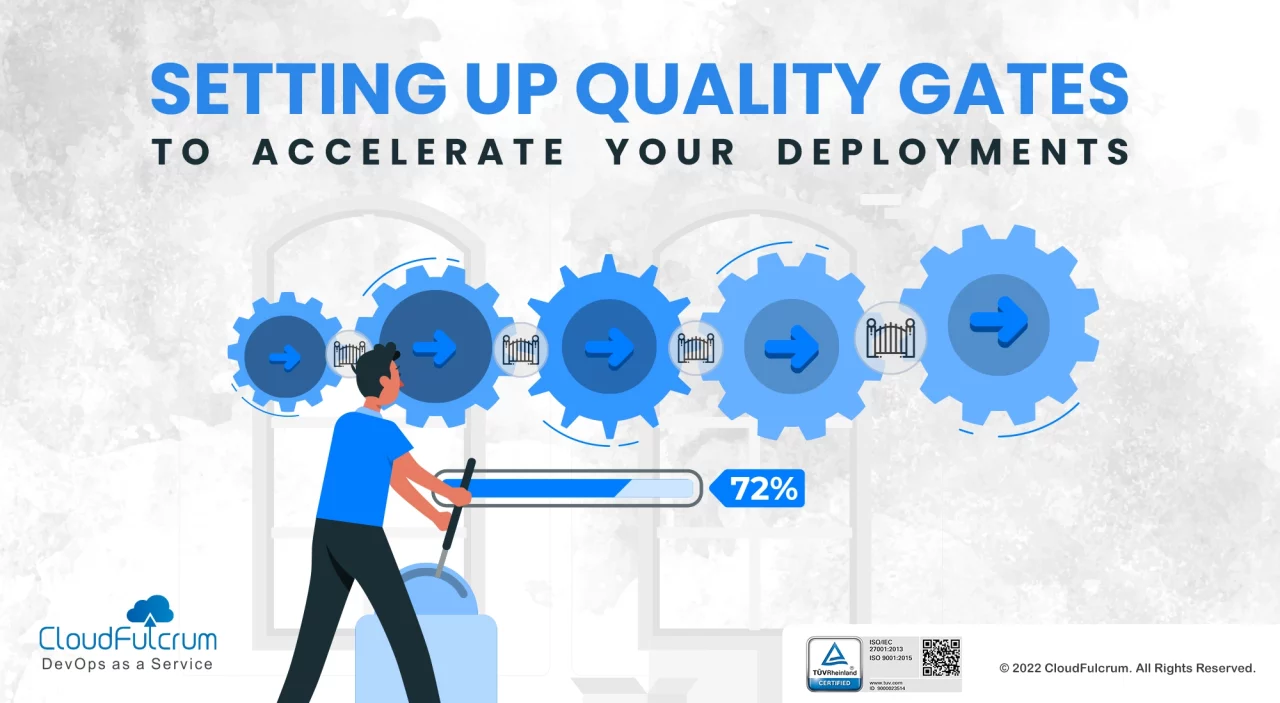Continuous testing is critical in delivering rapid software. While it sounds simple in theory, it takes a lot more to achieve it. Today’s discussion is centered around the many benefits of “shifting testing left.” Having automated Quality Gates integrated into your build pipelines is an important element for the rapid build and deploy process automation necessary to truly reap the benefits of Agile.
But are automated Quality Gates for everyone? The implementation is tough and you must weigh the pros and cons and optimize as needed to get a positive ROI for the implementation. In this article, we take a deep dive into setting up Quality Gates within a CI/CD context.
What Are Quality Gates?
Picture a scenario. Your team has been pulling all-nighters on a new code for a big feature release. As the code is pushed to production, alerts start coming in. when this happens, you need to roll back the deployment, fix the bugs, and re-deploy, resulting in lost time and wasted efforts. But if you had quality gates set up, you can prevent these issues from occurring, experience less downtime, and build more secure products—faster.
A quality gate, essentially, is a set of defined requirements to move a project from one stage to another. It could be manual or automated. Think of them as a checklist for running tests or a full code review. Quality gates are important in DevOps as they verify completion and consistency, but they must be set per each business’ priorities.
When you have quality gates, your teams can halt or fail a build if they detect issues in time and minimize them post-production. They are the benchmarks in the software delivery lifecycle that define specific, measurable, and achievable success criteria to be met before moving to the next phase of the software delivery pipeline.
You must add technical, operational, and business indicators while defining your quality gates to enable consistent, automated, and continuous evaluation of software quality to ensure it meets the objectives of all stakeholders. Quality gates can be applied at the system, project, and release levels. They can also be used as part of the overall product development or QA lifecycle.
How Quality Gates Can Improve Deployments?
In DevOps, quality gates are used to ensure quality, speed, and reliability throughout the development lifecycle. Here are a few key reasons why they are the best bet right now to improve deployments.
- Quality: By enforcing quality gates, your dev teams can ensure that the codebase always meets the baseline standards. This reduces the chances of releasing substandard or vulnerable code with no impact on the development pipeline.
- Agility: Quality gates are proactive in nature rather than reactive. This helps them assess a product’s potential shortcomings quickly and maintain product standards with swift resolution. All this, of course, improves organizational agility in line with the speed and responsiveness promise of DevOps.
- Technical debt: Every time quality standards and bug fixes are pushed to the next stage under intense pressure and deadlines, your teams pile on the technical debt. Quality gates are an effective way to set a limit on technical debt as they will only allow clean and high-standard deployments to pass through.
- Security: Code quality and security are inextricably linked. Quality gates ensure that sub-standard codes aren’t sent for deployment.
Metrics to Define Your Quality Gates
You can start with a set of metrics to help you arrive at an effective combination of quality gates per your business needs.
- The volume of errors: Set up a quality gate to determine your error volume with each release. While defining the parameters for this gate, ensure you capture everything, even swallowed and uncaught exceptions. Also account for comparisons with throughput. You’ll have a higher error volume when more throughput is pumped into the system, so normalizing it with a percentage. Take care of data duplication as well.
- Unique error count: Sep up a quality gate to count the number of unique errors. This data would give you a picture of the code quality and also the performance cost associated with having those events into the code with a direct impact on the reliability of your product. It’s important to ensure that the number of unique error counts, especially in key applications or code tiers, should not increase between releases.
- New errors: A quality gate must be set up to ensure the visibility of any new errors with any release. You should be able to prioritize events for this, and must also differentiate if the error is of a critical type or in a critical component.
How CloudFulcrum Can Help You Set Up Effective Quality Gates
As with many solutions today, automation is the answer to realizing higher efficiencies – doing more with limited resources and time. Which is why agile saw such a massive rise in popularity. Having an automated quality management system does much of the legwork for you to ensure you release high-quality code while maintaining your velocity.
At CloudFulcrum, “DevOps as a Service” is our mission, and have deep expertise in DevOps tooling, be it with COTS products like Copado, AutoRABIT, Flosum, etc., as well as enterprise DevOps platforms like Jenkins, Azure DevOps.
Our seasoned DevOps experts will do an assessment of your current SDLC practice in the context of process and automation, and provide recommendations on the quality gates in the areas of process areas like code review, quality control, production change control, segregation of responsibilities as well as recommendations on tooling around Static Code Analysis, Security, and compliance checks to ensure you can achieve the benefits of faster go-to-market with higher reliability.




